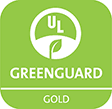Problems with Drywall
Drywall—also known as wallboard, plasterboard, gypsum board, or by the brand name Sheetrock—has largely replaced plaster in interior walls and ceilings. The gypsum used to make drywall can be mined, made synthetically from coal-fired power plant waste or recovered from recycled drywall.
Until recently, there were no regulations on contaminants in drywall. Even now, limits exist for only one contaminant, sulfur, yet biocides and other chemicals added to drywall may also raise health concerns. You should never work with drywall without protective gear.
Sulfur
In 2009, drywall imported from China triggered thousands of complaints to the U.S. Consumer Product Safety Commission. The Chinese drywall released high levels of sulfur gas, which can corrode wiring and appliances, and is also a health hazard. Residents reported trouble breathing, headaches, nosebleeds and other symptoms severe enough to force them from their homes. In 2013, the commission recommended replacement of all drywall in affected homes. (See the commission's Remediation Guidance listed under Resources at the end of this section.) The commission's investigation found similar problems in some homes with drywall believed to be made in the U.S.
In 2015, the federal government enacted a new law requiring that drywall manufactured in or imported to the U.S. have less than 10 parts per million of sulfur. The new law also requires labeling of drywall with the name of the manufacturer, the country of origin and the date it was made.
Mercury
Depending on the source of the gypsum, drywall may contain heavy metals, including mercury, which is a dangerous neurotoxin. This is particularly a problem with synthetically produced gypsum.
Studies have shown that drywall made from coal waste can emit levels of mercury that are more than 10 times higher than that from mined gypsum. Although it may seem like recycling materials is a good thing, the mercury captured in power plant waste is released into the air in significant quantities from factories making the drywall. For these reasons, drywall made from synthetic gypsum is not recommended. Mercury-free alternatives that do not contain any type of gypsum are available.
Joint Compound
Drywall joint compound can contain harmful ingredients, including formaldehyde and acetaldehyde, both known carcinogens, and crystalline silica, which is a carcinogen when inhaled. Most premixed joint compounds contain harmful biocides like tributyltin, which is a potent endocrine disruptor and is highly toxic to aquatic life.
Look for joint compound that is low in VOCs, biocide free, and free of formaldehyde and acetaldehyde. Powdered joint compounds that must be mixed on site are less likely to contain biocides, but may pose increased inhalation concerns, so use appropriate ventilation and protection equipment.
Mold and Moisture
In rooms with moist air, like bathrooms, paper-faced drywall can support the growth of mold. To counter mold, drywall is often treated with harmful biocides, or antimicrobial chemicals, but these may not be very effective. Instead, we recommend using non-paper-faced drywall when moisture is an issue.
Environmental Impact
The manufacturing of standard drywall is energy intensive, producing millions of tons of greenhouse gases each year. There are low-carbon-footprint, high-recycled material drywall alternatives that are comparable in cost to standard drywall. One alternative, made from 100 percent recycled milk and food cartons, is moisture resistant and does not emit VOCs.
Harmful Dust
Cutting drywall and sanding dried joint compound can expose you to harmful chemicals in the dust. The dust can irritate your respiratory system and cause persistent coughing or difficulty breathing. If the drywall contains silica, long-term exposure can cause cancer or lung diseases.
If you are undertaking a home project that involves cutting or sanding drywall, make sure to wear proper personal protection equipment, including a respirator that has been properly fitted for you. Using a vacuum sander can also reduce exposure to dust. Whether you’re doing the work yourself or hiring a contractor, make sure the work area is properly isolated from the rest of the home.
Alternatives
There are drywall alternatives available that do not contain gypsum and do not require the energy-intensive heating processes for production. Products without gypsum produce less harmful dust during cutting. One type, called MgO board, is made with magnesium oxide and recycled wood dust. It is also moisture resistant, but has a high carbon footprint because it must be shipped to the U.S. from Asia. Check compatibility of these alternatives with different joint compounds.
